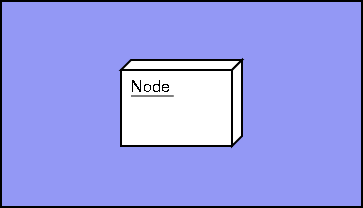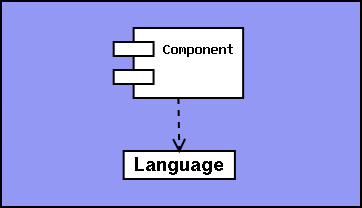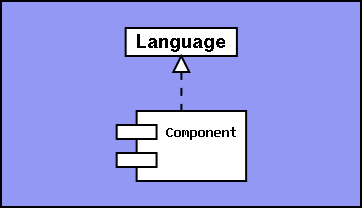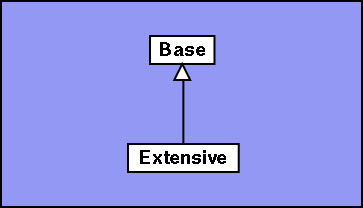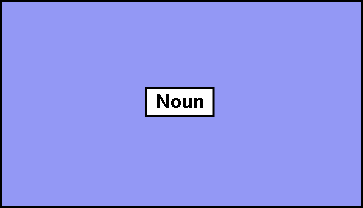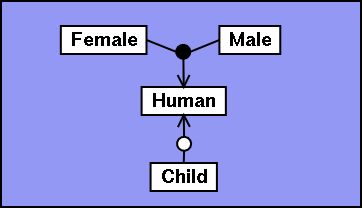 |  |  |  |  |  |  |  |  |  |  |
NotationTwo notations are used in the description of LISA. One for Architectural descriptions and one for Language descriptions.Architecture ModelThe Architecture models borrow their notation from UML, but beware. The meaning of the model elements are more precise in LISA than in UML.A Language is modelled with an UML interface. Note that a Language is not an interface in the UML sense, but a conceptual idea of a possible communication.
A Component is modelled with an UML component.
A computing Node is modelled with an UML node.
A usage is modelled with a dashed open arrow. It shows that the Language pointed to is used by the Component at the other end. The arrow can also point to a Component, if it is clear which Language the Component implements.
A Language implementation is modelled with a dashed closed arrow. It shows that the Language pointed to is implemented by the Component at the other end.
A Language extension is modelled with a closed arrow. It shows that the Language pointed to is extended by the Language at the other end.
All model elements can have a stereotype to show specializations.
Language ModelFor Language descriptions, a simple notation is used.A noun is modelled with a rectangle.
A relation between two nouns is modelled with a line. The relation has a separate name in each direction. At each end, the multiplicity of the relation is modelled with a range.
Specialization is modelled with an arrow and a circle. The nouns pointed from are mutually exclusive specializations of the noun pointed to. If the circle is filled, all possible specializations are enumerated. If the circle is empty, more specializations are possible.
|
Related Topics
Architecture Component Domain Language Language |
| Copyright (C) 2003, Marcus Andersson |


